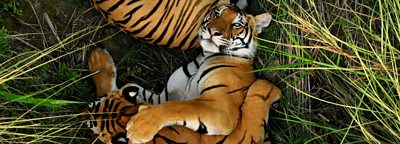���˿��� Natural History has had a great year. Asia brought audiences incredible new stories from across the continent, with 8 million viewers watching the first episode – making it one of the highest rating series on the ���˿��� last year. Silverback about gorilla conservation in the Congo won a series of major awards including a Grierson and Big Cats 24/7, which follows the lives of big cats in Botswana’s Okavanga Delta, was an iPlayer hit.
British viewers are still enthralled by our approach to the natural world, but in an increasingly crowded and challenging international field it’s important we keep moving the genre forward.
One of the top things we think about is how our programmes stand out on iPlayer, At the development stage we want all our producers to be thinking about how a clear title and thumbnail image will sell your show to viewers scrolling through the platform.
Our focus is currently on five areas:
1. Originality in bluechip series
How do we make our bluechip series stand out in a challenging landscape?
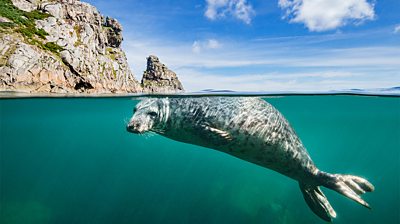
Our blue-chip series are big, epic pieces that we tend to broadcast on ���˿��� One on Sunday evenings. They’re characterised by big filming schedules, big budgets and big ambitions. These series perform fantastically on iPlayer, with stunning imagery and internationally renowned talent making them stand out on the platform, and as blue-chip natural history is evergreen, people come to them there long after their linear run.
Our mantra here is originality. There are three areas we want people to think about:
New subjects
We want stories about the natural world that the audience are unfamiliar with. The Green Planet explored the world of plants and fungi, winning a Grierson award, Wild Isles gave British wildlife the blue-chip treatment and was the highest rating factual series on British television in 2023, and Asia took viewers to little-known parts of the continent. What big subjects and stories have we never covered before? And which have we not revisited in a long time?
New storytelling
How do we move on from closed episodes? We would love to build natural history content that is bingeable on iPlayer, that has cliff-hangers or other devices designed to pull in audiences and keep them hooked from one episode to the next. Can we borrow formats or structures from more other genres and apply them to the animal world?
New technology
Technological developments are opening up the natural world like never before. New filming technologies used in Asia enabled us to witness animal behaviour in ways that have never been seen and filming tigers close-up by drone showed them in a totally fresh way. Moments like this also help create word of mouth buzz, drawing in new viewers. What other subjects would benefit from new technologies can we utilise to amaze our audience and give them unique new access?
2. Single films and short series
How can we bring in new audiences and perspectives about the natural world through narrative storytelling?
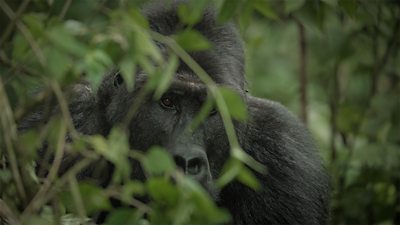
Narratively driven single films and limited series are an important part of our strategy and help bring the natural world to audiences who may not usually come to the genre. They can be feature length, hours or short series, but they must feel cinematic and give viewers a deep dive into the subject and they must stand out on iPlayer, so come to us with thoughts about titles and thumbnail images that will sell your show on the platform.
These films are usually co-productions and it’s worth thinking about these funding models from the outset.
Human-animal relationships
This could involve following scientists and researchers who know animals intimately, or people who have a close relationship with them through shared habitat. In the multi award-winning Silverback wildlife cameraman Vianet Djenguet embarks on a journey of a lifetime - documenting a grueling but critical conservation effort to habituate a family of eastern lowland gorillas. But unexpectedly for Vianet, the mission also pushes him to re-explore issues from his past.
Following a story across three years unlocked a huge amount of emotion in , which followed baby elephant Toto and his keeper Joseph, both orphans. It also enables a deep dive into elephant behaviour that feels fresh and distinctive.
Archive
The wealth of natural history archive not only tells the stories of individual species, but also of our changing world. Mixing archive with in-depth interview in a similar way to contemporary history or true crime documentary can bring in new audiences to the genre. We’ve done this with , a two-part limited series telling the story of the female chimpanzees of Gombe through a power battle between two rival families that has raged for decades. Jane Goodall and her team have filmed these chimps for sixty years, meaning there’s a huge bank of archive to play with.
Place
Explorations of place are also important for our single films. Sometimes a good way to understand landscape and environment is through a person intrinsically connected to it. In The Last Mountain the tragic story of 30 year-old climber Tom Ballard connected viewers to the beautiful mountains of Pakistan. Are there people living so close to nature that we can understand the location through their eyes?
Tone
Our single films must have a variety of tones and styles. As well as in-depth, thoughtful films, we’d love a bit more playfulness in our storytelling or more thrilling rides with risk and adventure. My Epic Camel Adventure with Gordon Buchanan sees Gordon travelling across the Gobi Desert to gain intimate insight into the lives of camels, while Expedition Killer Whale follows the wave-washing orca pod made famous by Frozen Planet II as a team try to discover the secrets behind this complex behaviour.
3. Spotlight on the environment
How can we find new ways of bringing audiences to stories about the challenges facing our planet?
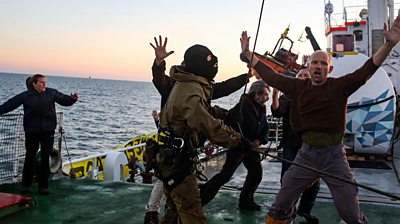
We are more committed than ever to telling stories about the environment. But when people are struggling in their daily lives, how do we get them to engage with the issues facing our planet? How do we bring in new audiences who may not usually come to this sort of content? And how do we deliver new information to viewers who already familiar with environmental issues?
Combining environmental issues with other themes can help and we’ve had success with environmental thrillers such as Murder in the Pacific, which promises intrigue and excitement but contains fascinating information about the environment, while the multi-award nominated On Thin Ice: Putin v Greenpeace follows the incredible story of Greenpeace activists who tried to mount a protest at an Arctic oil platform and ended up in a Russian jail. The gripping narrative unfolds ‘like a Bond film’, but as you watch you begin to understand the impact of arctic oil drilling on our planet’s climate. We’re looking for other environmental thrillers on new subjects.
It's also important to focus on environmental issues directly. Our Changing Planet documents the health of our global environment and this year we’re focusing on the huge global issue of river pollution, with access to a groundbreaking dam removal programme on California’s Klamath river. How else can we tackle environmental issues on the nose? How can we keep serving an engaged, passionate audience who are informed but who want to know more?
4. Returning brands
How can we create compelling new returning brands that don’t take four years to make?
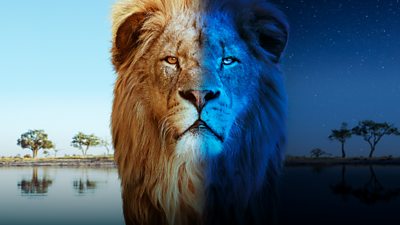
We’re looking for series that go beyond the traditional. These can be returning or limited series, but they need to push the boundaries of natural history filmmaking.
Expedition
We are keen to look at how to reinvent the expedition space. How do we bring roughness back into natural history filmmaking? The blue-chip series are fantastic at showing the beauty of the natural world, but we want to see more of the rawer side too. They have to feel authentic and purposeful, but also think about tone and approach. For example, Big Cats 24/7 sees expert camera teams from Botswana and the UK tracking lions, leopards and cheetah across the remote and unforgiving terrain the Okavango Delta, keeping their cameras rolling 24/7. The mix of cutting-edge technology and unique round the clock tracking means we can follow the cats’ amazing behaviour like never before.
Storytelling
We want to be more creative with storytelling. How can we tell stories differently? Maybe retrospective? Or how can we follow animal stories in a different way? Big Little Journeys follows six of the planet’s smallest creatures on their epic journeys of a lifetime. Using technology from The Green Planet we get down to their level, so you really see the journeys from their perspectives.
5. On-screen creatives
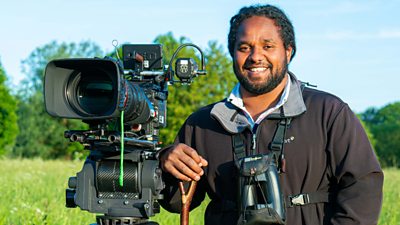
We have a wealth of established natural history presenters and contributors and we’re always interested in how we can work with them in different ways. Authenticity and being immersed in the subject are really important. The best expert-led documentaries are when you really feel they have committed the subject they’re talking about, like Hamza Yassin introducing viewers to hidden British wildlife in Hamza’s Hidden Wild Isles.
We’re also keen to find the next generation of natural history voices. Diversity and authenticity are key. For Big Cats 24/7 we have been able to launch a number of new on-screen faces both from Botswana and the UK, which was really exciting.
Unscripted on iPlayer
Read about how we commission unscripted content in an iPlayer first-world, along with advice and further resources to maximise the impact of your programme on the platform.
-

Commissioning for iPlayer: find out more
Strategy and advice for maximising impact on the platform
Natural history commissioners
-

Jack Bootle
Head of Commissioning, Specialist Factual
How to send us your ideas
-
Our ideas submission system for established companies
-
Accessing PiCoS
Eligibility criteria, how to guides and contacts -
How we commission
Our processes, commitments and priorities -
Not an indie?
Grow your skills and career in television
Further advice and support
-
Named business leads
Business advice per genre for companies with ideas in play -
Indies outside London
Advice and commissioning leads for each Nation and region -
Small or new indies
Our tailored support packages and advice -
Diverse-led indies
Our investment, commitments and contacts
Production resources
-
Diversity on and off-screen
Requirements, funds and contacts -
Sustainable productions
Requirements, resources and contacts -
Production and delivery website
End to end programme delivery and contacts
Explore the site
-
Briefs and contacts
Commissioners and ideas -
Supporting indies
How we commission and work -
Skills and training
Industry training and skills development
Search by Tag:
- Tagged with Factual Factual
